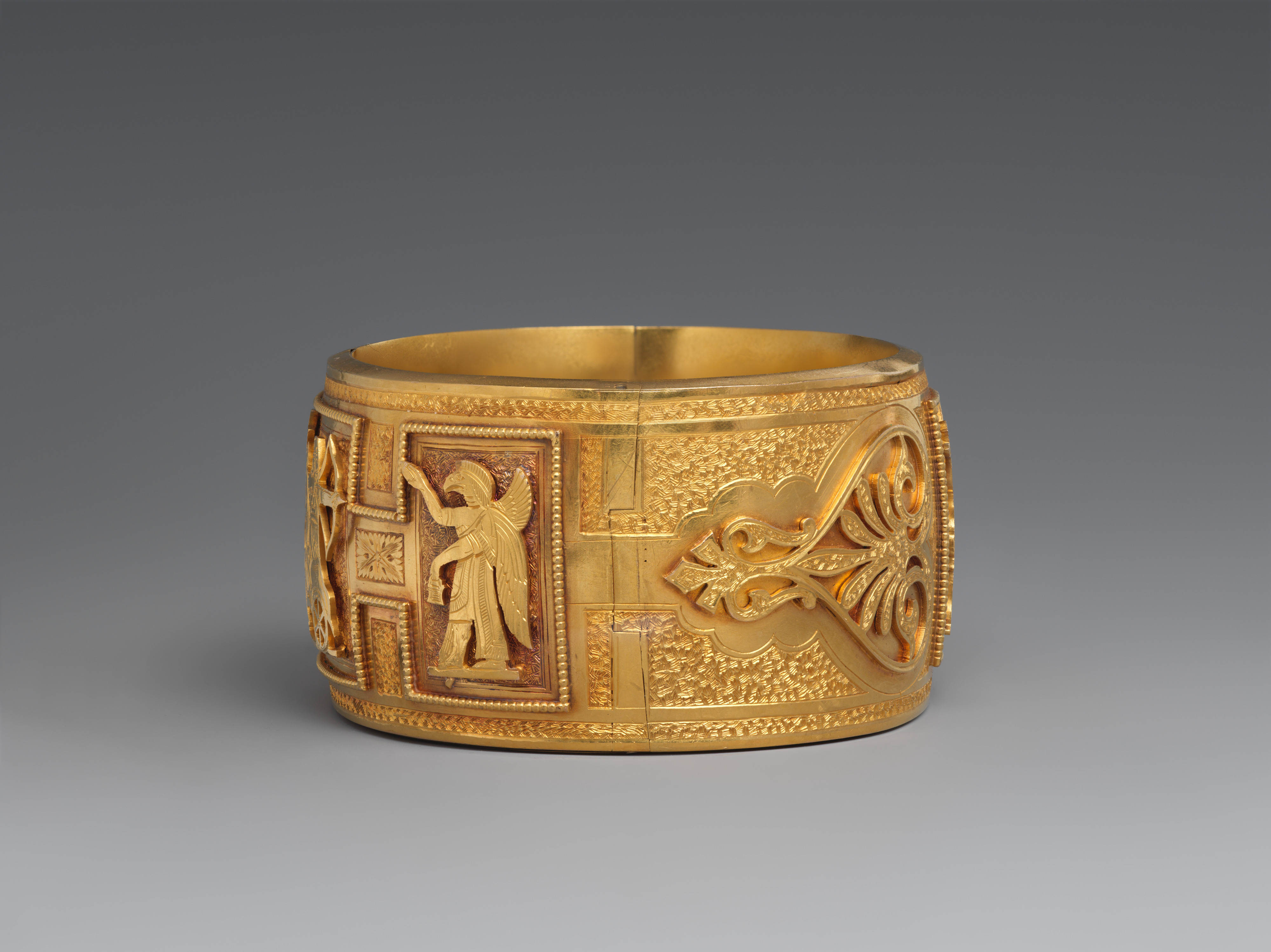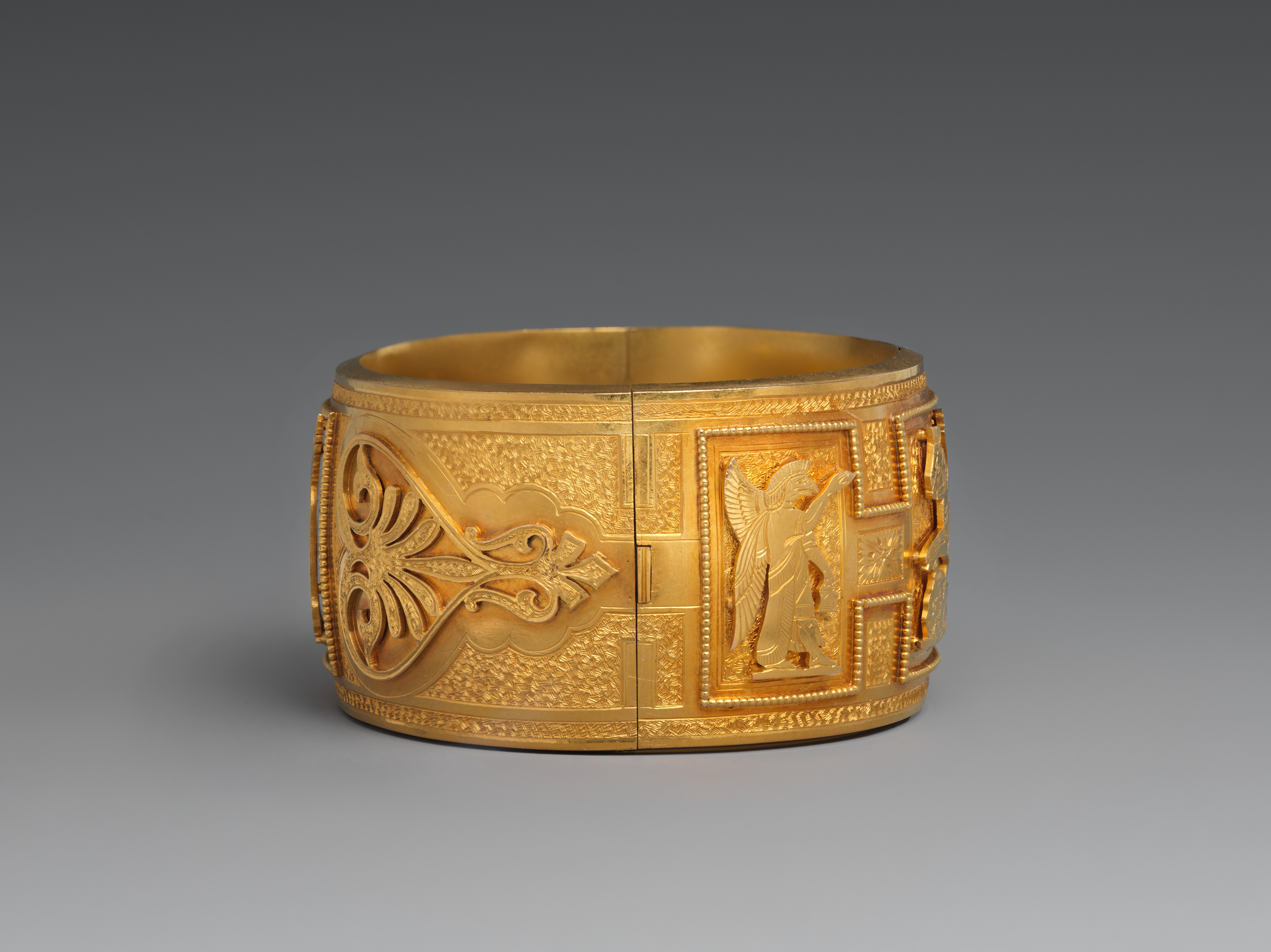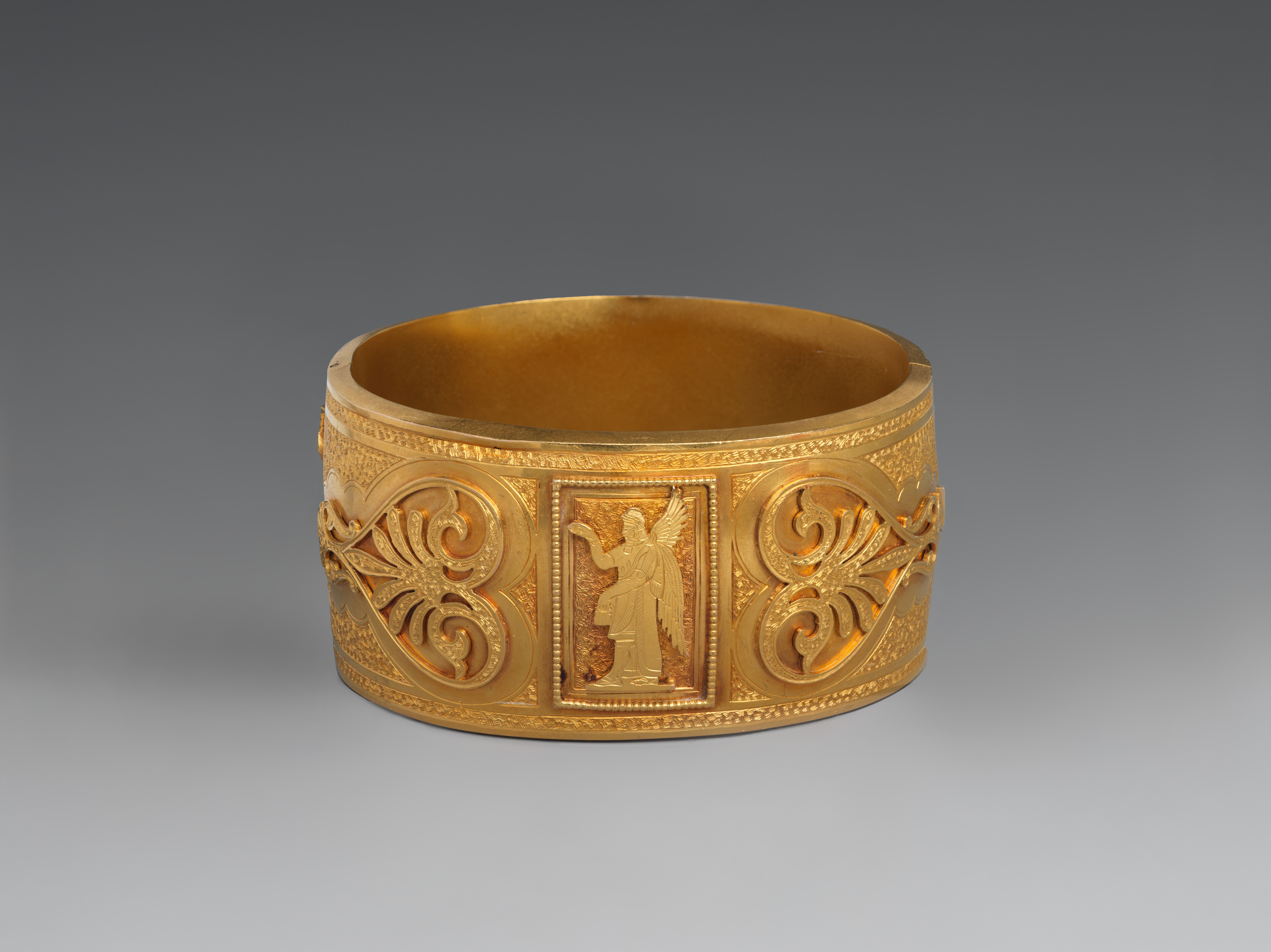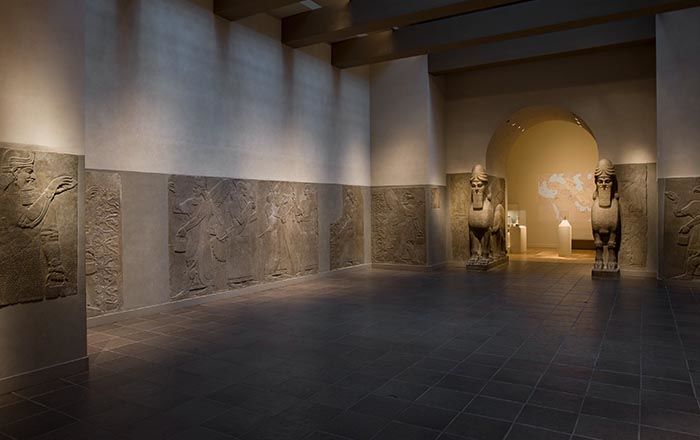Bracelet with Assyrian-inspired design
Not on view
Following the excavation of Assyrian palaces in the mid-nineteenth century, ancient Mesopotamian imagery began to be used in European decorative arts, including jewelry and ceramics. Publicity in the form of news coverage and popular books around the excavations, removal of many sculptures from sites in northern Iraq to England and France, and public spectacles such as the reconstructed ‘Nineveh Court’ in the Crystal Palace at Sydenham, London, fostered a fascination with Assyria and Assyrian art among the Victorian public.
This hinged bracelet features a design based on reliefs from the Northwest Palace of Ashurnasirpal II (r. ca. 883–859 BCE) at Nimrud, ancient Kalhu. The central scene on one side of the bracelet is modeled on a relief now in the British Museum showing a royal lion hunt, with the addition of a winged disc containing an archer god, drawn from military scenes in the same palace. At either side of this main scene and on the other side of the bracelet are eagle- and human-headed protective figures, sometimes identified with apkallu, wise sages from before the great Flood of Mesopotamian mythology, that appeared on many of the reliefs, and stylized plant motifs that refer to ancient Greek and Etruscan as much as to Assyrian art.
This image cannot be enlarged, viewed at full screen, or downloaded.
This artwork is meant to be viewed from right to left. Scroll left to view more.







